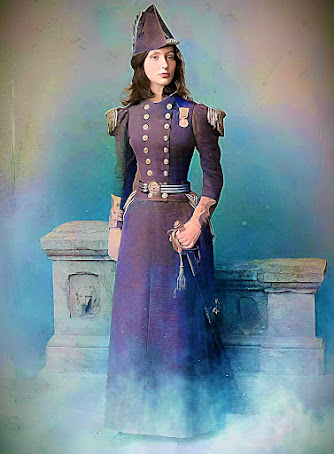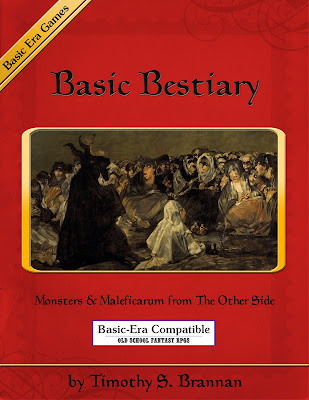
Several hundred years from now, mankind has spread far out into the Solar System. Tensions between the Martian Congressional Republic, based on the greatly terraformed planet of Mars, and the United Nations of an Earth restored through the use of the same terraforming technology, have almost driven the Solar System to war. Ultimately what prevented conflict was the Martian government sharing details of the Epstein Drive, a new technology which would open up the frontier in the asteroid belt and the outer planets beyond. Like every frontier before it, prospectors raced out in search of new resources—metals to support industries across the Solar System and water to support the new and growing habitats and settlements—with colonists behind them. A growing sense of resentment at their exploitation would see the Belters set up the Outer Planets Alliance protect their interests, though the Earth-Mars Coalition would brand them terrorists. The discovery of a strange molecular technology on Phoebe, a moon of Saturn, would lead to radical changes across the Solar System. The Protogen Corporation, the corporation assigned by the Martian Congressional Republic to study it, branded it the Protomolecule and conducted experiments which would kill millions and ultimately threaten the Earth. Fortunately, there were some who could direct the threat away from the Earth and towards Venus, where it would radically transform the planet beyond all understanding.
This is the setting for The Expanse, the series of Science Fiction novels by James S.A. Corey, and the television series of the same name. It is also the setting for The Expanse Roleplaying Game, published by Green Ronin Publishing. The novels and the television series run to nine books and six seasons respectively, so The Expanse Roleplaying Game is set between the events of Leviathan Wakes and Caliban’s War, the first and second novels. The Player Characters can explore the setting of The Expanse, perhaps with their own spaceship, get involved with the conspiracies and politics of the setting between governments and corporations, and more.
The Expanse Roleplaying Game uses what has become known as the ‘AGE’ or ‘Adventure Game Engine’ was first seen 2010 in Dragon Age – Dark Fantasy Roleplaying Set 1: For Characters Level 1 to 5, the adaptation of Dragon Age: Origins, the computer game from Bioware. It has since been developed into the Dragon Age Roleplaying Game as well as the more generic Fantasy AGE Basic Rulebook and a more contemporary and futuristic setting with Modern AGE Basic Rulebook. This is the basis for The Expanse Roleplaying Game. It comes with rules for creating Player Characters, including enough focuses, talents, and specialisations to take the Player Characters from First to Twentieth Level, handling fast-paced action built around action, combat, exploration, and social stunts, spaceships and spaceship combat, background setting, advice for the Game Master, plus more... That more includes a new short story, ‘The Last Flight of the Cassandra’, by James S. A. Corey, stats for the cast of the novels, a beginning scenario, and advice when to set a campaign.
A Player Character in The Expanse Roleplaying Game is defined by his Abilities, Focuses, and Talents. There are nine Abilities—Accuracy, Communication, Constitution, Dexterity, Fighting, Intelligence, Perception, Strength, and Willpower. Each attribute is rated between -2 and 4, with 1 being the average, and each can have a Focus, an area of expertise such as Accuracy (Gunnery), Communication (Leadership), Intelligence (Technology), or Willpower (Courage). A Focus provides a bonus to associated skill rolls and, in some cases, access to a particular area of knowledge. A Talent represents an area of natural aptitude or special training, and is rated either Novice, Expert, or Master. For example, at Novice level, the Pilot Talent, the Player Character is quick to start a vehicle and make appropriate tests as minor actions; at Expert level, he gains a bonus to all rolls involving speed; and at Master level, the character’s player can reroll failed rolls, bit must keep the second roll, plus as long as the vehicle is moving, it receives a bonus to its defence. As a Player Character goes up in Level, he can acquire Specialisations, such as Ace or Executive, which grant further bonuses and benefits. A character also has a Background, Social Class, and Profession, plus a Drive, Resources and Equipment, Health, Defence, Toughness, and Speed, and Goals, Ties, and Relationships.
To create a character, a player rolls three six-sided dice for each Ability—assigning them in order, but can swap two. He then rolls his origins and native gravity, which is either a Belter, an Earther, or a Martian. After that, he rolls for Social Class and an associated Background and Profession. A Background provides an Ability bonus, a choice of a Focus, and a choice of a Talent, plus randomly determined Focus or Talent, whilst a Profession provides a pair of Focuses and a pair Talents to choose from, plus a resources score and starting Fortune. The player selects a Drive, such as Achiever or Networker, which grants another pair of Talents to choose from as well as an improvement to a Relationship, a Reputation, or Resources. The process itself is fairly quick and results in a reasonably detailed character. Alternatively, and with the permission of the Game Master, a player can pick these options rather than roll for them. This is a good choice if the players need to decide what their characters are and what they do as a team or a crew, for example, that of a spaceship as in the novels.
One stats missing from a Player Character is that of health or Hit Points. Instead he has Fortune Points. These serve two primary functions. First, they can be expended to alter the value of a die (which costs more for the Drama die), and second, they work as the equivalent of Hit Points. In effect, their use sort of reflects the Player Character’s luck being used up or running out.
Our sample Player Character is Jadamantha Holland, who grew up in a klade of indentured labourers and crafters out in the belt. Renowned for her outspoken attitude she was elected its negotiator after she complained at the poor deals being bargained for their labour with the corporation they were indentured to. She stuck to her guns and got a better deal, year on year, and then for other klades as she fomented a drive for them to unionise. She was successful, but the corporations would ultimately rig the elections and ensure she did not win. Consequently she hates the corporations and supports the Outer Planets Alliance, often moving from location to location, negotiating workers’ rights. When that does not work out she is an invertebrate gambler and often she can turn her hand to most things. Her often obstinate views on authority get her into trouble.
Jadamantha Holland
Background: Belter
Social Class: Lower Class (Labourer)
Occupation: Negotiator
Level: 1
Accuracy 0
Communication 3 (Bargaining, Gambling)
Constitution 1
Dexterity 2 (Crafting, Free-fall)
Fighting 0
Intelligence 2
Perception 2
Strength 1
Willpower 3
Defence 12 Toughness 11 Speed 12 Fortune 15
Talents: Carousing (Novice) Improvisation (Novice), Oratory (Novice)Drive: Rebel
Resources: 2
Mechanically, the
AGE System and thus
The Expanse Roleplaying Game, is simple enough. If a Player Character wants to undertake an action, his player rolls three six-sided dice and totals the result to beat the difficulty of the test, ranging from eleven or Average to twenty-one or Nigh Impossible. To this total, the player can add an appropriate Ability, and if it applies, an appropriate Focus, which adds two to the roll. For example, a group of Outer Planets Alliance terrorists have been tracked to a belter station in the belt and the Earth-Mars Coalition is preparing a Marine Corps strike team. The Player Characters could sneak onto the station to find out what is happening there or they could negotiate with the Marine Corps strike team commander to wait before she sends her team in. The former would involve a player rolling the three six-sided dice, applying the Player Character’s Dexterity Ability, and if the Player Character has it, the Stealth Focus. The other option would be to roll the three six-sided dice, apply the Player Character’s Communication Ability, and if the Player Character has it, the Bargaining Focus.
However, where the
AGE System gets fun and where the Player Characters have a chance to shine, is in the rolling of the Drama die and the generation of Stunt Points. When a player rolls the three six-sided dice for an action, one of the dice is of a different colour. This is the Drama die. Whenever doubles are rolled on any of the dice—including the Drama die—and the result of the test is successful, the roll generates Stunt Points. The number of Stunt Points is determined by the result of the Drama die. For example, if a player rolls five, six, and five on the Drama die, then five Stunt Points are generated on the Drama die. What a player gets to spend these Stunt Points on depends on the action being undertaken. In 2010, with the release of 2010 in
Dragon Age – Dark Fantasy Roleplaying Set 1: For Characters Level 1 to 5, the only options were for combat actions and the casting of spells, but subsequent releases for
Dragon Age – Dark Fantasy Roleplaying expanded the range of options on which Stunt Points can be spent to include movement, exploration, and social situations. This has been carried over into
Modern AGE and
The Expanse Roleplaying Game and expanded and expanded.
So, what can stunts do? For example, for one Stunt Point, a player might select ‘Whatever’s Handy’ and grab the nearest improvised weapon, which though clumsy and possibly fragile, it will do; for five Stunt Points, select ‘Spray and Pray’, which applies an attack to everyone in a five metre radius, though they all get a Defence bonus; and for each three Stunt Points spent, ‘Hull Breach’ reduces the target vehicle’s Hull rating by a point. In an Investigation, ‘Flashback’ costs a single Stunt Point and reminds the Player Character of something he forgot, whilst in a social situation, ‘From the Heart’ costs four Stunt Points and enables the Player Character to express wholeheartedly a belief such that it temporarily grants a Willpower Focus and a bonus to the roll to use it.For example, Jadamantha Holland gets herself captured by the Marine Corps strike team readying itself to attack the belter station where the commander suspects there are some Outer Planets Alliance terrorists. Her loud mouth easily persuades the sergeant to take her before the commander by claiming that she has information about what is on the station. Jadamantha wants to persuade the commander to wait and let her colleagues find out what is happening on the station before the marines go in all guns blazing. Brought before the commander, Jadmantha tells her that she should not go in yet and that if she does, she sill have another Fred Johnson situation on her hands and there’s her career gone. The Game Master sets the base Test Difficulty at Hard or fifteen because the marine commander is determined to send her team in. Jadamantha’s Reputation as an Outer Planets Alliance sympathiser counts against her and so increases the Test Difficulty to seventeen or Formidable. Her player will roll the dice, add Jadmantha’s Communication Ability and +2 for the Bargaining Focus. In addition, Jadamantha’s player gives an impassioned speech warning about the danger of another Fred Johnson affair. This grants another +2 bonus. So altogether, the player is adding a total of seven to the roll. Jadmantha’s player rolls five, three, and then five on the Drama die. This means that she has succeeded and her player has five Stunt points to spend. Her player first chooses ‘Let’s make deal’, which enables Jadmantha’s words to benefit another person present, who now owes her a favour, if only begrudgingly. This is the marine sergeant, who is now concerned that his commander is going in hot. This costs three Stunt points and Jadmantha has successfully persuaded the commander to stay her hand.
Another use for the Drama die is to determine how well a Player Character does, so the higher the roll on the Drama die in a test, the less time a task takes or the better the quality of the task achieved. The main use though, is as a means of generating Stunt Points, and whilst Stunt Points and Stunts are the heart of the action in
The Expanse Roleplaying Game, there are a lot of them to choose from. Now they are broken down into categories, and that does limit what a player can choose from. However, upon initial play, a player is not only going to be faced with an abundance of choice, but in making that choice can slow play down. In combat that is a real problem because it is meant to be exciting and dynamic. Ultimately, this should lessen as players get used to the system and find out what Stunts work best with their characters, and as they get used to these choices, which is when they will find that the array of Stunts available do reflect aspects of the setting and story of
The Expanse.
In addition to covering action, combat, exploration, and social scenes,
The Expanse Roleplaying Game covers rules for handling resources (money), reputation, technology and equipment, and more. There is a solid guide to the latter and what is clear is that beyond the Epstein Drive for spaceships, technology is not overly advanced. Beyond that, the highest piece of technology listed is power armour, which is rarely to be found in possession of the Player Characters. In covering lifestyle, communications, food, and more,
The Expanse Roleplaying Game begins to impart a feel of the future it depicts. Some players may be disappointed by the treatment of the technology in terms of weaponry, the differences of which are determined by various Qualities and Flaws. Mechanically this is effective, but it does feel flavourless in terms of the setting.
In comparison,
The Expanse Roleplaying Game goes into some details about how space travel and spaceships work in its future. This includes a discussion of motion, mass, spin, and velocity, all of it surprisingly technical. This is not built into the rules though, which means that a calculator and an understanding of mathematics is not required to play the roleplaying game or handle a spaceship. Instead, it supports the roleplaying game and setting as a hard Science Fiction setting, rather one of just pushing the button and the ship goes., and should instead be used to flavour and inform the narrative in play. Various types of spaceships are detailed from a lowly shuttle all the way up to large freighters and battleships. These are all relatively simply defined with Hull points, crew size and competence, sensors, weapons, and Qualities and Flaws, if any. They are illustrated, but no deck plans, at least for the types of spaceships the Player Characters would have access to, which again is disappointing as that again would have imparted a stronger feel for the setting. (That said,
Ships of the Expanse does include those deck plans as well as other information.) In general, whether or not the Player Characters own or have a spaceship will be down to the type of campaign being played or the narrative.
Spaceship combat builds on the core mechanics and has a fluid feel to it. Primarily, it adds another table of Command Stunts for the captain to choose from if he rolls well at the beginning of each round. This can flavour and influence the course of the action from round to round, so that ‘Guidance’, which costs one or more Stunt Points, gives bonus points to assign to combat tests throughout the round, or ‘Set-up’, which costs four Stunt Points and is used to maneuver an opposing ship into a hazard, whether that is into the range of a weapon with a shorter range, a debris field, or even an asteroid. Reflecting the harder feel of its Science Fiction, the spaceships do not have shields, damage being done directly to the hull, and weapons are all kinetic, whether that is Point Defence Cannons, rail guns, or torpedoes. The rules for spaceship combat are supported by a good example of play—the best in the book.
The guide to the future depicted by
The Expanse, essentially the background to the setting, does not appear until over halfway through the book. This covers the history of setting all the way up to the first two novels, as well as background on Earth, Mars, the Belt, and the Outers beyond that. It also includes full details and stats of the main members of the cast—Chrisjen Avasarala, James Holden, and more. This would allow the players to take them as characters if they wanted to. Perhaps fans of the television series and the novels may be underwhelmed by the lack of background, but
The Expanse Roleplaying Game is not intended to be the definitive sourcebook for either. Overall, it is a good solid introduction to, and overview of, the setting.
The Game Master is really only given one more mechanic. To aid her handle and increase tension, she is given Churn. Reset at the beginning of each adventure, this ticks up and is tracked whenever a player rolls a six on the Drama die, spends more than four Stunt Points, a player spends Fortune, or the Player Characters overcome an encounter or hazard. When the thresholds are exceeded at ten, twenty, and then thirty points, the Game Master checks for a ‘Churn Over’ which can result in a minor, major, or epic setback or turn of events which in some way impedes the Player Characters. Other than this, the section for the Game Master is dedicated to solid, well written advice on running the game and adjudicating the rules, plus creating adventures, GM styles, and knowing your players—the latter particularly well done. It also includes adversaries, both mundane and outré, potential rewards for the Player Characters, and a discussion of the themes to be found in
The Expanse and how to use them in the game. It suggests several campaign or series frameworks, including freelancers, military, political, rebellions, Protomolecule, and other series. It even discusses how to run Parallel series with two or more groups and a series exploring the setting of The Expanse beyond the story depicted in the fiction. All come with plot hooks and there are some concepts for taking beyond the canon too. It even plots out
Leviathan Wakes, the first novel, as a plot arc.
Lastly, ‘To Sleep, Perchance To Dream’ is an introductory scenario which a Game Master can run as a one-shot or beginning of a campaign. In the Player Characters are hired by the Mormons on Tycho Station to investigate the disappearance of two scientists. The plot of the scenario is not connected to that of the novels, so it has the feel of there being other things going on other than the threat posed by the Protomolecule. The scenario will bring them into contact with one of the major characters of the setting, but only tangentially, which is a nice touch for fans of the series. Plus as written it should all end with a cinematic climax.
Physically,
The Expanse Roleplaying Game is cleanly presented, illustrated throughout in full colour, the artwork nicely depicting the future of
The Expanse, as well as its various characters. In places, it is perhaps slightly too busy in terms of its layout, sometimes making it less than an easy read. However, it is well written and an engaging read, especially the background and the advice for the Game Master on running a game and choosing a series framework.
From its inception in 2009 with
Dragon Age – Dark Fantasy Roleplaying Set 1: For Characters Level 1 to 5 to the publication of
The Expanse Roleplaying Game in 2019, the
AGE System has evolved from an elegant and easy way to handle cinematic fantasy into something which is both complex and comprehensive. It still retains its core elegance, but it is no longer as easy, having more choices and more crunch. This is unavoidable though, given the hard Science Fiction of
The Expanse setting, and to be fair,
The Expanse Roleplaying Game explains and handles it very well. The core elegance of the
AGE System means that the Player Characters can get to do exciting, even cinematic action and interaction, in what is a hard Science Fiction setting, and so have a chance to shine.
The Expanse Roleplaying Game is an impressive adaptation of the start of
The Expanse setting, one which fans of hard Science Fiction roleplaying will enjoy as much as fans of
The Expanse.
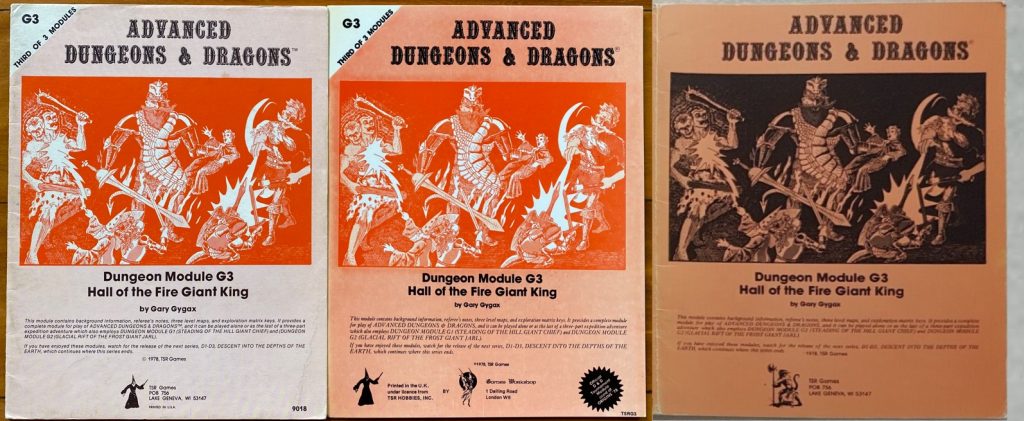 What’s New?
What’s New?
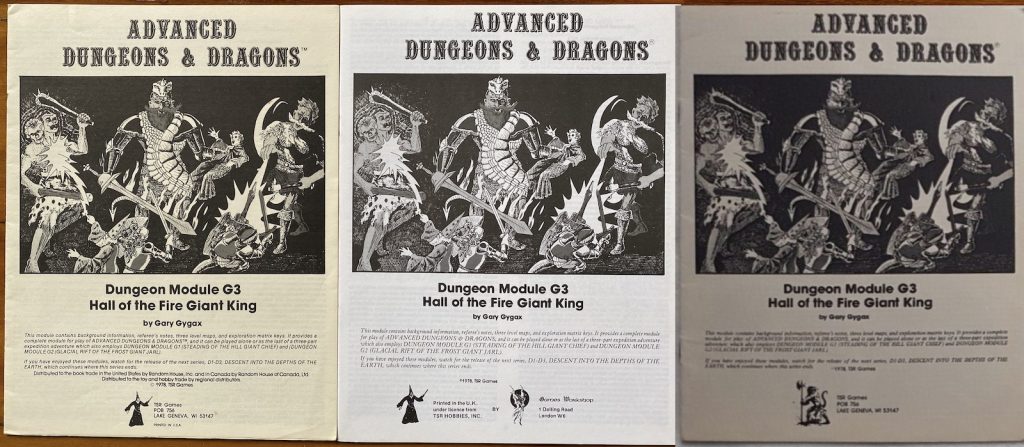 Art
Art
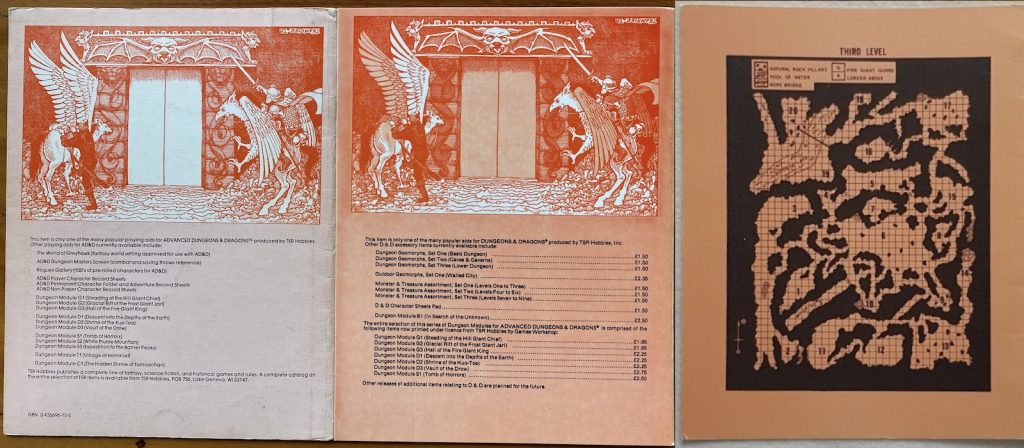 General
General
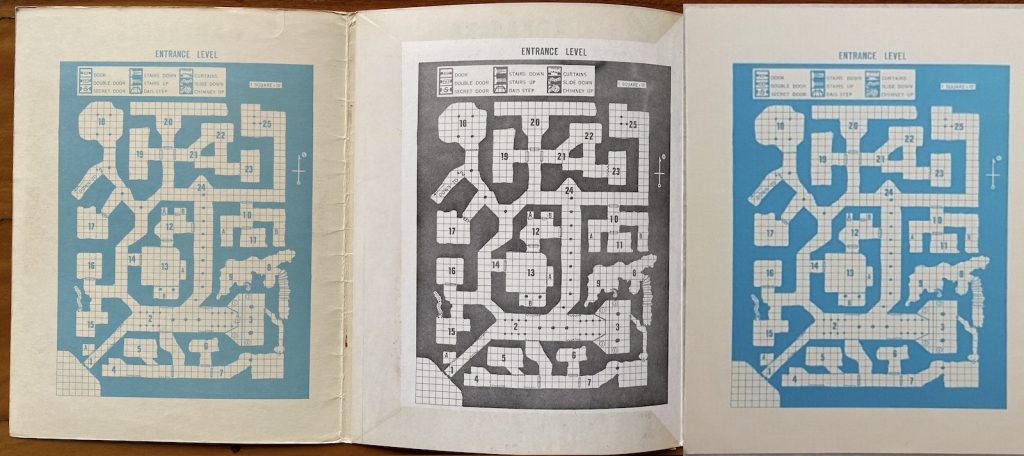 Image Information
Image Information












